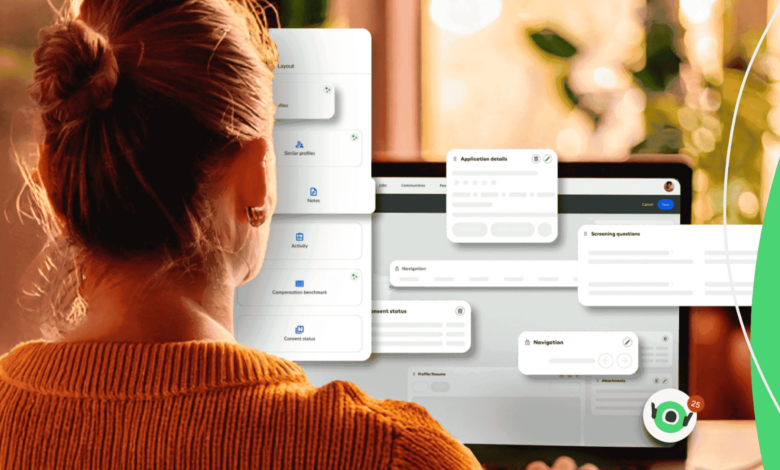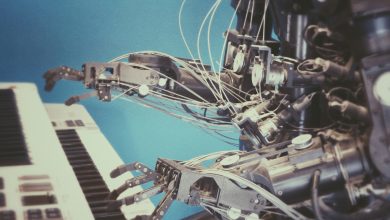
The Strategic Imperative of Modern Hiring
Recent data reveals an important conundrum: while 62% of companies acknowledge that optimised hiring is critical to business performance, 55% report finding the hiring workflow more complex with rising candidate expectations, evolving regulations, and persistent skill gaps.
The challenge of screening growing applicant volumes while maintaining alignment with long-term business objectives reflects ongoing shifts in the hiring landscape. According to SmartRecruiters’ latest benchmark report, companies are attracting an average of 73 applications per role – nearly double the traditional 30-40 applications. Yet despite this influx, the global median time to hire has held steady at 38 days.
This is, in part, a result of the rise of AI-assisted applications which continue to transform candidate behaviour. Jobseekers increasingly use these tools to streamline and submit applications at a faster rate. One of the impacts of this is that recruiters must now process larger pools of nearly identical applications with limited time and resources, with only 1.1% applicants ultimately receiving job offers in the UK .
This creates a troubling puzzle. While both sides have more technology at their disposal, the hiring process becomes less effective. Without smart adoption of AI tools to match the increased number of candidate applications, recruiters risk falling further behind in their management of talent acquisition processes.
AI’s Transformational Potential
AI’s role in recruitment is often discussed in terms of future potential, but its impact is already visible. Organisations using AI fill positions 26% faster while improving candidate experience, with the burden of tasks like scheduling and timely communication being automated. Early signs show this is leading to a 10%+ improvement in roles filled on time.
The benefits of new hiring tools are particularly tangible in the healthcare industry where there is often a shortage of talent. Normally, healthcare jobs require very specific qualifications wherein candidates either have the right medical certificates or don’t. But now, smart systems can spot when someone’s experiences in a different field correlate into being the right fit for the job without the manual process of having an individual read through every application with the level of detail and attention that might be required to spot transferable skills and experience.
Similar help is increasingly observed in other fields like manufacturing where roles often stay open 45% longer than others because they are harder to fill. Using AI to process applications can increase the pool of available talent and accelerate the time to hire. The new tools can find people who are not actively job hunting but have transferable skills; it is like having a helper who knows where to look for the right people.
AI Tensions in the Hiring Ecosystem
However, the adoption of AI by both sides of the hiring equation has also introduced new forms of tension – as both employers and candidates adopt AI tools, mutual distrust grows as well. Analysis reveals telltale linguistic patterns in applications as certain terms and jargon give away which jobseekers used AI-assisted CVs. In such cases, employers might respond with detection algorithms, creating a technological standoff that risks undermining trust.
The tension reflects legitimate concerns on both sides. Candidates worry that opaque algorithms might filter out their qualified applicants, while employers fear enhancement tools may enhance skills and distort human elements.
Redefining Human Judgement in Hiring
The real power of AI in recruitment is not about replacing human decision-making – it is about making it better. By taking over time-consuming tasks like sorting CVs and scheduling interviews, which can eat up to 80% of a recruiter’s time, AI frees up the hiring team to focus on what really matters: engaging with candidates to understand whether someone complements the company culture.
This approach works because it combines each side’s strengths – machines excel at fast, precise data processing, while humans thrive at building trust and meaningful connections.
In a recent Hiring Leaders’ Webinar, 70% of the audience said that the number one thing they would do with more time available for their recruiters is build stronger relationships with current and future candidates.
Confronting Algorithmic Bias
The interplay between AI and unconscious bias in recruitment cuts both ways. While algorithms lack inherent prejudices, they risk repeating historical biases if trained on flawed hiring data. The solution lies in two key principles: transparency and human oversight.
The most advanced systems today offer explainable AI outputs for candidate recommendations – whether based on skills verification, role-specific tenure, or organisational fit metrics. Crucially, they allow recruiters to adjust these parameters, prioritising attributes that matter most for each vacancy. This feedback loop continually refines the AI’s suggestions while preserving essential human judgement.
Equally vital is addressing bias at source. Tools that assess job adverts with exclusionary language and suggest neutral alternatives help attract diverse applicants from the outset. When paired with explainable AI recommendations, more equitable hiring workflows are created which maintain efficiency without becoming impersonal.
The Candidate Experience Revolution
Perhaps AI’s most profound impact lies in reshaping candidate engagement. Where applicants continue to be ‘ghosted’ during application processes, intelligent systems now optimise talent acquisition workflow and provide personalised feedback. This transparency correlates strongly with offer acceptance rates – particularly in the US where 21% of candidates historically decline offers due to poor communication.
The transformation extends to onboarding as AI hasn’t removed the need for Change Management. Organisations skilled in leveraging AI-assisted workflows are faster to observe productivity in new hires, as automated systems personalise training based on individual learning patterns. This creates a virtuous circle where better experiences attract stronger candidates, who in turn drive business performance – directly impacting the bottom line.
Importantly, successful adoption demands operational redesign. Leading organisations follow three implementation principles: starting with high-volume, low-complexity roles before expanding; maintaining human oversight at critical decision points; and continuously validating algorithmic recommendations against actual hiring outcomes.
Balancing Innovation and Humanity
As AI assumes routine tasks, recruiters evolve into talent strategists – interpreting data insights, cultivating candidate relationships, and aligning hiring with organisational goals. This collaborative model proves particularly valuable in addressing emerging challenges like skills-based hiring and internal mobility.
For candidates, the new paradigm promises fairer evaluation and clearer pathways to opportunity as the future of work evolves. For employers, it offers the ability to make quality hires at scale while reducing administrative burdens. The organisations that thrive will be those that harness AI’s capabilities without losing sight of hiring’s fundamentally human nature.
The Smarter Future of Work and Hiring
The recruitment industry stands at an inflection point. AI’s ability to process vast applicant pools and identify subtle patterns is undeniable – but so is the irreplaceable value of human judgement in assessing cultural fit and potential. The most forward-thinking organisations recognise this duality, creating hiring systems that are simultaneously more efficient and more equitable.
As the AI race intensifies, the competitive advantage will go to those who use technology to enhance rather than replace human connection. By maintaining transparency, validating outcomes, and preserving meaningful touchpoints, companies can transform hiring from a transactional process into a strategic differentiator. In doing so, they’ll prove that the future of work and talent acquisition is not a choice between human intuition and algorithmic efficiency, but their integration.




